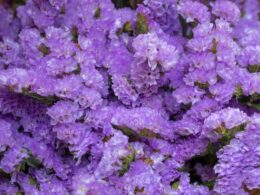About Common Camas (Camassia Quamash), a Native Staple Food
Camas (Camassia quamash) is a perennial herb with a thick, fibrous root system. The grass-like leaves are arranged in a basal rosette and are flat, linear, and 8-32 inches long. The small, funnel-shaped camas flowers grow in dense clusters on rigid stems that can reach up to 3 feet tall. Common names for Camassia plants include:
- quamash;
- Indian hyacinth;
- camash;
- wild hyacinth.
Camas plants are found in damp meadows, along streams, and in open woodlands throughout North America (from British Columbia to California, western Montana and Wyoming). They’re most commonly found in the Pacific Northwest, where they were an important food source for indigenous peoples. The bulbs of the camas plant were often roasted in pits or steamed, and they could be stored for long periods of time. Today, camas is still eaten in some parts of the world and is prized for its sweet, nutty flavor.
Camassia Leichtlinii and Other Edible Camas Roots
There are 6 species of camas plants, and Camassia leichtlinii is another one with an edible root. This plant is also known as the great camas or large camas. It is similar to C. quamash in appearance but can grow up to 4 feet tall! The flowers are larger and more showy, ranging in color from white to lilac. Great camas is found throughout the western United States and Canada.
The roots of most Camassia plants are edible, but C. quamash and C. leichtlinii are the most commonly eaten camas bulbs. The bulbs need to be baked or boiled for a long time to soften them. They can then be eaten whole or mashed and used in soups or stews.
Other edible species are Howell’s camas (Camassia howellii), Atlantic camas (Camassia scilloides), and prairie camas (Camassia angusta). The last species we haven’t mentioned is Cusick’s camas (Camasia cusickii), which has bitter roots and hasn’t been used for culinary purposes.
Don’t Mistake Them for Meadow Death Camas!
Now that you know all about camas flowers, you may be eager to go out and find some to add to your garden. But before you do, make sure you can tell camas plants apart from their poisonous lookalikes!
Meadow death camas (Toxicoscordion venenosum) is a member of a different family and genus, but it shares a similar appearance to camas. Both plants have grass-like leaves and grow in meadows, but death camas is more likely to be found in drier areas. This plant has small, white flowers that grow in loose clusters, whereas camas flowers have blue or purple petals and grow in dense clusters.
Death camas is very poisonous, and its bulbs have been mistakenly eaten in times of famine. The only animal that can tolerate the plant’s toxins is the death camas miner bee (Andrena astragali), which feeds on the plant.
How to Grow Camas Flowers
If you want to add camas flowers to your garden, they’re relatively easy to care for. They may not be as showy as your tropical beauties, but their unique form and history make them a plant worth growing. Here are a few tips:
- Camas flowers are best planted in fall or early winter, so that they have time to establish themselves before the hot summer months.
- They prefer full sun, but will tolerate partial shade.
- Common camas grows well in hardiness zones 4-11.
- These plants need moist, well-drained soil, but they’re not picky about it. They’re even tolerant of serpentine and clay soils, as long as there’s enough moisture in the spring.
- Adding a layer of mulch will help the soil retain moisture.
- These plants can also be grown from seed, but it can take 3 years for them to bloom.
Once they’re established, camas flowers are drought-tolerant. It’s best to allow the soil to dry out between watering in the summer. They’ve adapted to seasonal rainfalls, though, so don’t worry if they get a lot of water in the spring.
Camas plants are relatively pest- and disease-free. The biggest problem you’re likely to encounter is rust, which causes orange or red spots on the leaves. This fungal disease is most common in humid climates and can be controlled with fungicides.
With a little care, camas flowers will add beauty and interest to your garden for many years to come. So go out and enjoy these unique plants! And don’t forget, if you’re ever in the mood for a sweet treat, you can always eat the bulbs.



















